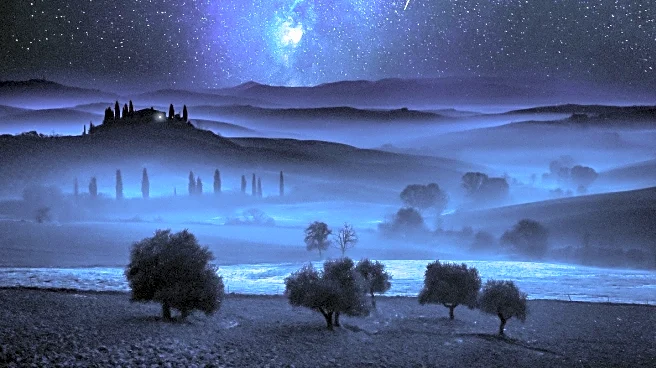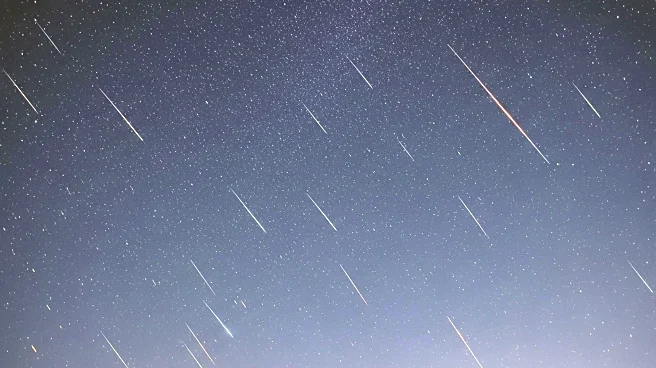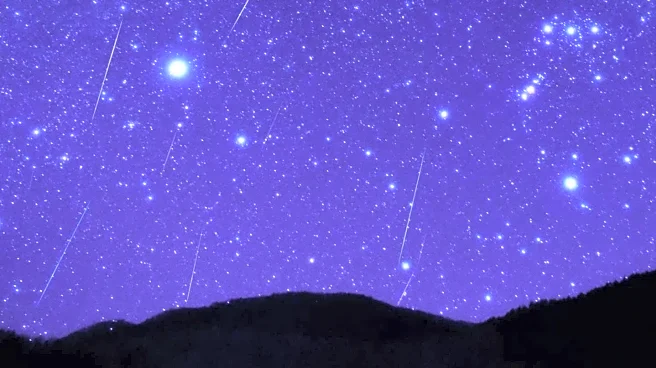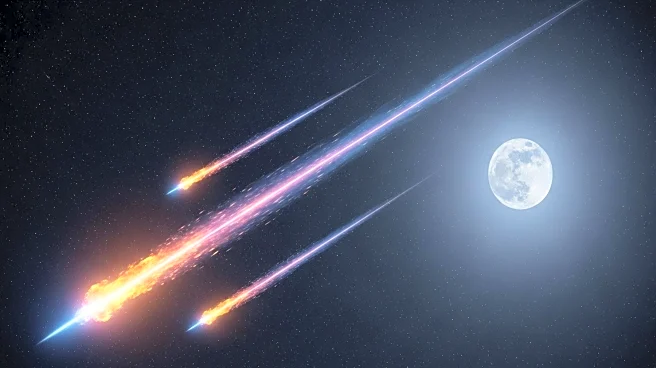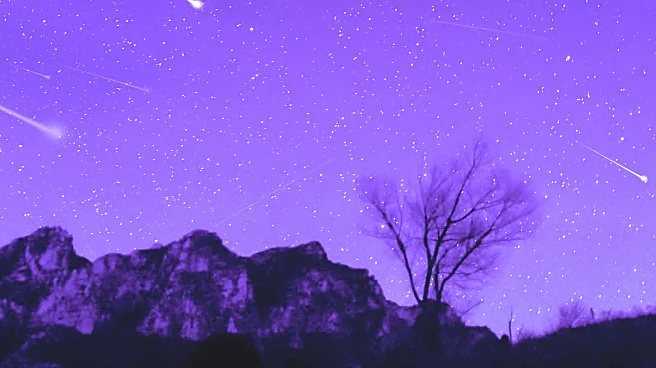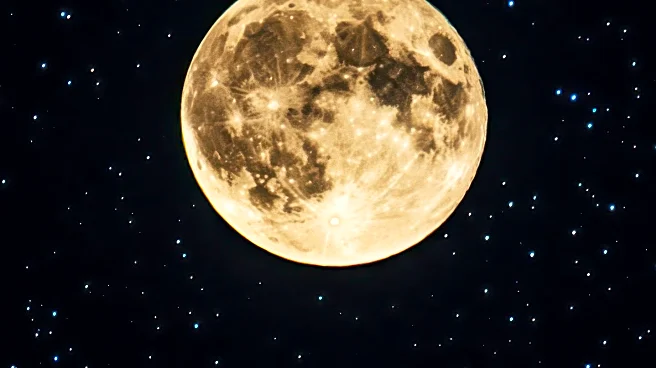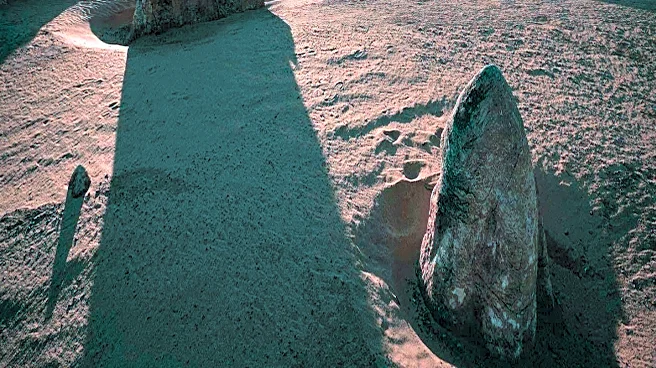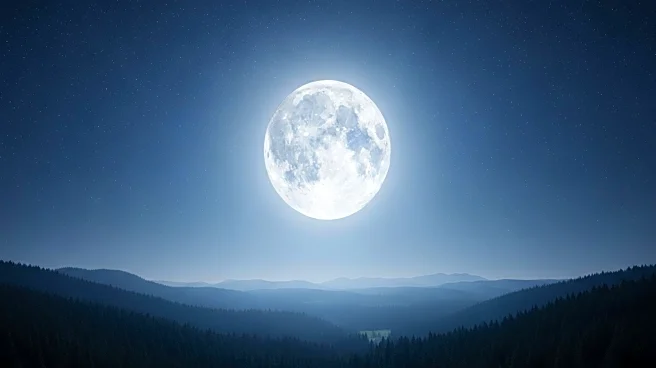What's Happening?
The Draconids meteor shower is set to illuminate the night sky between October 6 and October 8. Originating from the debris trail of Comet 21P Giacobini-Zinner, the meteors are expected to be visible across the Northern Hemisphere, including the United States. This celestial event coincides with a supermoon on October 6, which will appear 14 percent larger and 30 percent brighter than usual. The Draconids are unique as they are best viewed in the evening, unlike most meteor showers that peak in the early morning hours. Under optimal conditions, observers may see up to 10 meteors per hour, although the bright moonlight may hinder visibility.
Why It's Important?
The Draconids meteor shower offers a rare opportunity for stargazers and astronomy enthusiasts to witness a natural spectacle. The event's timing with a supermoon adds to its significance, providing a dual celestial experience. This meteor shower is particularly accessible as it can be observed in the evening, making it more convenient for a wider audience. The visibility of such events can inspire interest in astronomy and science, potentially influencing educational pursuits and public engagement with space-related topics.
What's Next?
Following the Draconids, the Orionids meteor shower is expected later in October, offering another chance for skywatchers to observe meteors. As the Draconids are known for their unpredictability, there is always the possibility of an unexpected meteor outburst, which could draw increased attention from both amateur and professional astronomers. Observers are advised to find locations with minimal light pollution to enhance their viewing experience.

